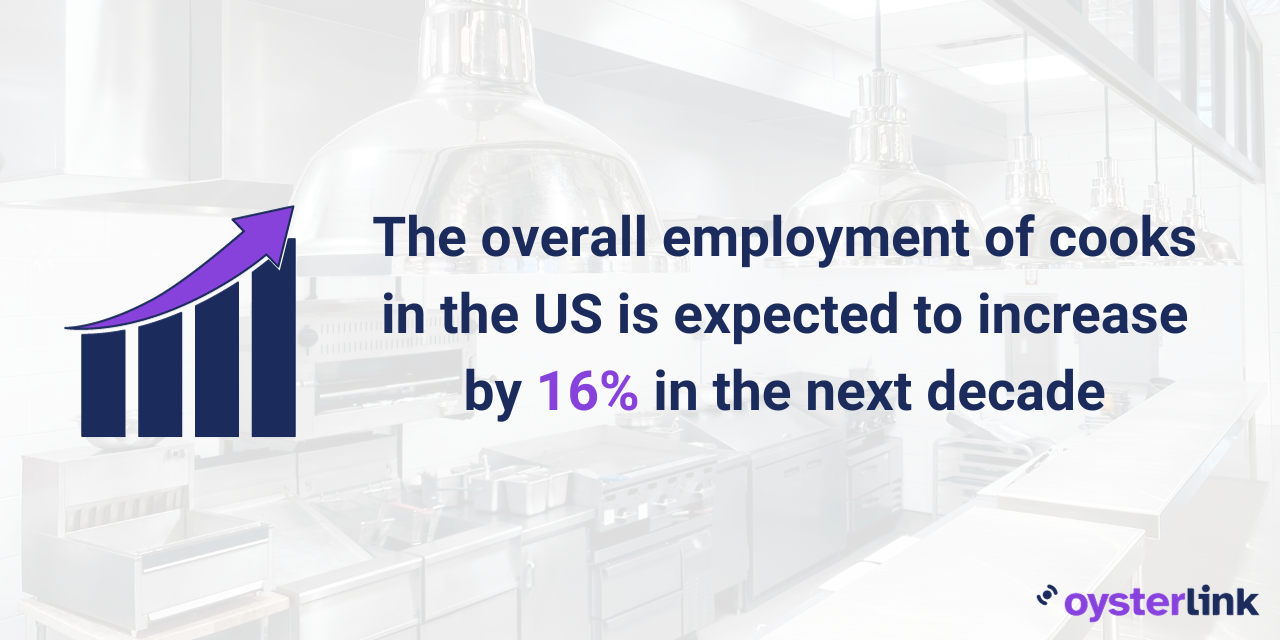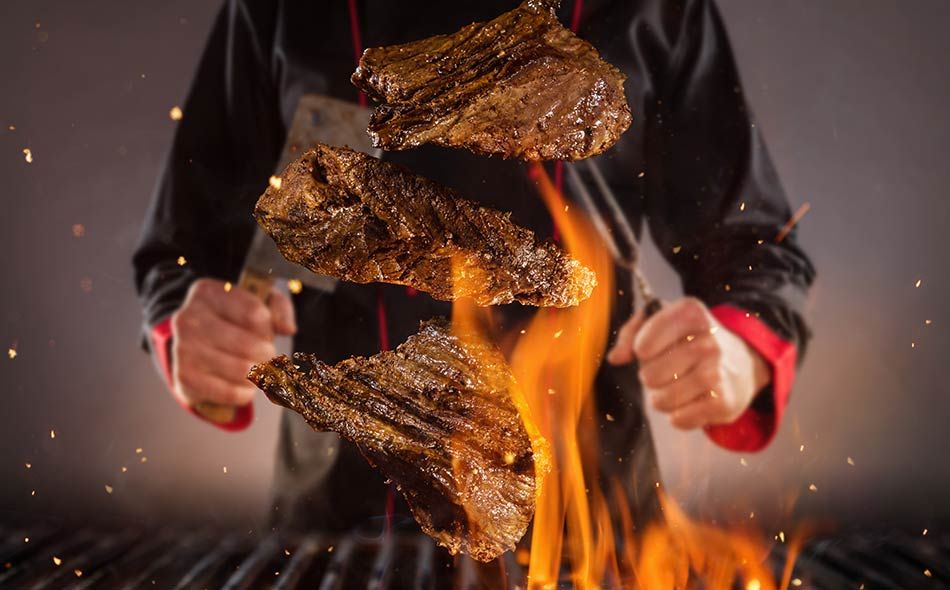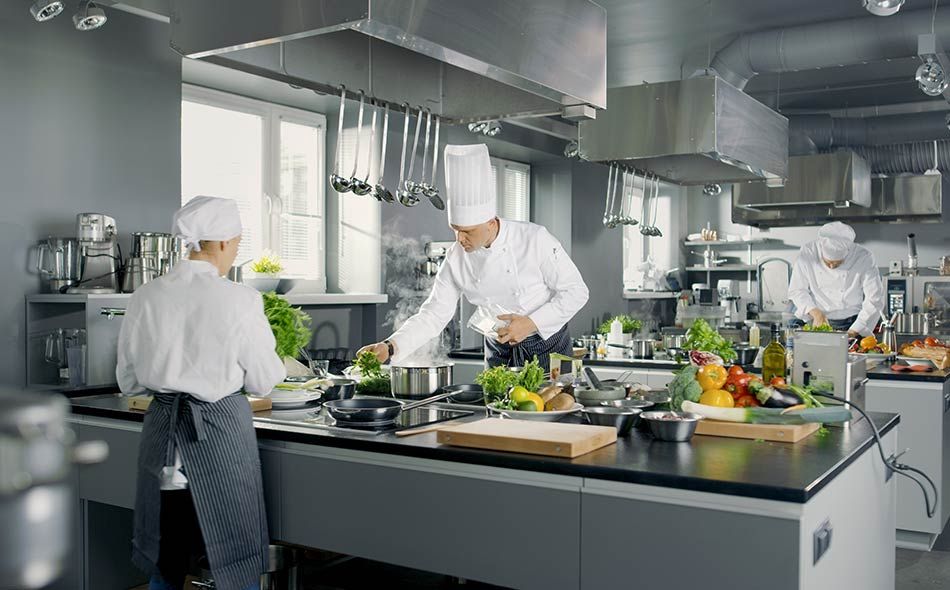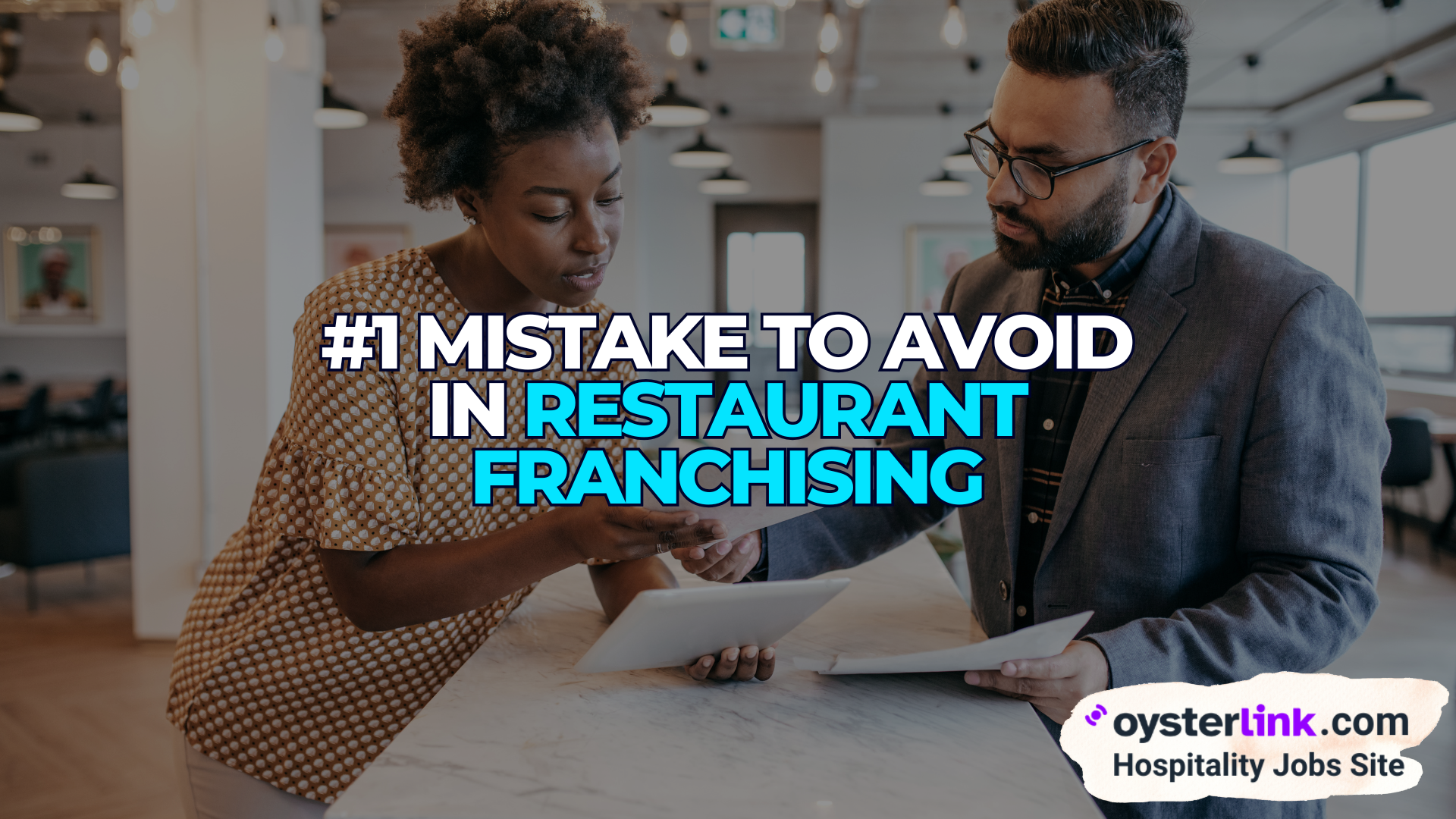Are you ready to jump into the culinary arena? In just a few lines, we break down the raw differences between line Cooks and Prep Cooks - what it takes to thrive in each role and how you can turn your kitchen hustle into a blazing career.
Over the next decade, the U.S. Bureau of Labor Statistics projects a 16% growth in employment for cooks, with 480,600 new openings annually. This increase highlights the ample career opportunities available in restaurants ranging from family-owned diners to upscale hotel kitchens.
Among the many roles in the culinary world, Line Cooks and Prep Cooks are foundational to restaurant success. Understanding the differences between these roles is essential for those starting or advancing their culinary careers.

Line Cook vs. Prep Cook: Key Differences
- Seniority: Line Cooks hold a more senior role, managing specific stations, while Prep Cooks focus on ingredient preparation.
- Experience: Line Cooks typically have more training and experience, often starting their careers as Prep Cooks.
- Work Sequence: Prep Cooks work before service to prepare ingredients, while Line Cooks handle cooking during service hours.
- Career Growth: Prep Cooks often transition to Line Cook positions, with opportunities to advance further as Sous Chefs or Head Chefs.
- Salary: Line Cooks earn more due to their experience and role complexity.
Prep Cooks are often viewed as entry-level positions in the culinary world, offering an opportunity to learn kitchen dynamics, develop knife skills and master ingredient preparation. Over time, Prep Cooks who demonstrate dedication and a willingness to learn can transition to Line Cook roles.
This progression might involve additional training, mentorship from senior Chefs or gaining certifications such as a food safety certificate. A typical path includes starting in a smaller establishment before moving to higher-end kitchens with more specialized stations.
What Does a Line Cook Do?
A Line Cook operates a specific station in the kitchen, preparing and assembling dishes before they’re served. Stations may include frying, grilling, roasting or creating soups and sauces. Line Cooks are cross-trained to assist across different stations when needed, ensuring seamless food preparation.
Key responsibilities:
- Prepare food according to station assignments and recipes.
- Pass dishes to the next station for completion.
- Maintain clean and organized cooking surfaces.
- Ensure food storage meets safety and sanitation standards.
Skills needed:
- Time management and attention to detail.
- Strong communication for coordinating with teammates.
- Ability to handle high-pressure, fast-paced environments.

Line Cooks often work in specialized stations, and each position demands unique expertise:
- Sauté Cook: Prepares sautéed dishes and sauces, often working with premium ingredients like seafood or cuts of meat
- Grill Cook: Specializes in grilling techniques to create smoky and perfectly charred dishes
- Fry Cook: Handles all fried items, ensuring precise timing for golden, crisp textures
- Garde Manger (Pantry Cook): Focuses on cold items such as salads, dressings, and charcuterie boards
- Pastry Cook: Crafts desserts and baked goods, often requiring knowledge of precise measurements and techniques
By specializing in one of these roles, Line Cooks can build expertise and eventually advance to Sous Chef or Chef de Cuisine positions.
What Does a Prep Cook Do?
A Prep Cook handles the groundwork for food preparation. They ensure all ingredients are ready for Line Cooks to prepare dishes efficiently during service.
Key responsibilities:
- Wash, chop and measure ingredients.
- Manage kitchen inventory and organize ingredients.
- Prepare components like sauces and seasonings.
- Maintain cleanliness and sanitation in the kitchen.
Skills needed:
- Strong organizational skills.
- Physical stamina for repetitive tasks.
- Attention to detail for precise measurements and preparation.
The work environments for Line Cooks and Prep Cooks differ in pace and focus. Prep Cooks typically work behind the scenes during quieter hours, focusing on chopping, slicing and preparing ingredients for service. They work methodically, often following strict portioning or recipe guidelines.
In contrast, Line Cooks operate during service hours in fast-paced, high-stress conditions. They must work quickly and communicate effectively with the kitchen team to ensure orders are prepared accurately and efficiently. The heat of the kitchen, constant movement and time-sensitive demands make resilience a crucial trait for both roles.
Salary Comparison: National & City Averages
| Role | National Average | New York City | Miami | Chicago | Los Angeles |
|---|---|---|---|---|---|
| Line Cook | $34K–$38K | $39K–$43K | $36K–$40K | $35K–$39K | $38K–$43K |
| Prep Cook | $32K–$36K | $34K–$38K | $31K–$35K | $34K–$38K | $32K–$36K |
The salary for Line Cooks and Prep Cooks varies based on experience, location and establishment type. On average, Line Cooks earn more due to their expanded responsibilities and expertise. The demand for both roles remains steady, with the U.S. Bureau of Labor Statistics projecting a 10% growth in culinary job opportunities over the next decade.
Skills Needed for Line Cooks and Prep Cooks
Both positions require time management to prioritize tasks effectively. Line Cooks often balance multiple orders simultaneously, while Prep Cooks manage ingredient lists to ensure all items are ready for service. Strong knife skills are also vital, as both roles involve precision cutting to maintain consistency.
Additionally, attention to detail is essential for both roles: Prep Cooks must follow recipes accurately, while Line Cooks must ensure dishes meet plating standards and customer expectations.
In addition to the foundational skills, both roles benefit from:
- Adaptability: The ability to adjust to changing circumstances, such as menu modifications or unexpected shortages, is crucial in maintaining kitchen efficiency.
- Cleanliness: Maintaining a clean workstation is vital for food safety and overall kitchen hygiene. Both Line Cooks and Prep Cooks must adhere to strict cleanliness standards to prevent contamination and ensure a safe dining experience for customers.
- Teamwork: Both roles require effective collaboration with other kitchen staff to ensure a seamless workflow and timely service.
By honing these skills, kitchen staff can contribute to a more efficient and harmonious work environment.
How to Become a Line Cook
If you want to become a Line Cook, you will typically need:
- High school diploma or culinary school certificate.
- Food handler safety certification (varies by state).
- Key skills: physical stamina, attention to detail and time management.
Tips for Success:
- Practice station-specific techniques.
- Organize your tools and prepare early.
- Master the menu and prioritize special requests.
How to Become a Prep Cook
If you want to become a prep cook, you may not be required to have an advanced level of education, although you may need a food handler safety certification.
However, landing a job as a prep cook does require certain skills, such as:
- Basic understanding of cooking techniques.
- Strong organizational and multitasking skills.
- Food safety certification may be required.
Tips for Success:
- Create detailed prep lists.
- Use tools like parchment paper for efficiency.
- Maintain a clean and organized workspace.
Tools and Equipment Used by Line and Prep Cooks
The tools and equipment used by line cooks and prep cooks are tailored to their respective tasks:
- Prep Cooks: Rely on items like cutting boards, Chef’s knives, food processors and peelers to prepare ingredients efficiently.
- Line Cooks: Use sauté pans, grills, flat tops and plating tools to cook and assemble dishes during service.
Understanding and maintaining these tools are critical to ensuring kitchen efficiency. High-quality, well-maintained tools not only improve workflow but also help minimize waste.
Work Environment and Schedule Differences
Understanding the distinct work environments and schedules of Line Cooks and Prep Cooks can provide clarity for individuals considering these roles.
Work Environment:
- Line Cooks: Operate in a high-pressure, fast-paced setting during service hours. They work at specific stations on the kitchen line, such as grill, sauté, or fry and must coordinate closely with other kitchen staff to ensure timely and accurate dish preparation.
- Prep Cooks: Typically work behind the scenes, focusing on ingredient preparation before peak service times. Their environment is more structured, allowing them to concentrate on tasks like chopping vegetables, marinating meats, and preparing sauces without the immediate pressure of customer orders.
Schedule:
- Line Cooks: Often work during peak dining hours, including evenings, weekends and holidays. Their shifts are aligned with the restaurant's busiest times to manage live orders and ensure efficient service.
- Prep Cooks: Generally have shifts earlier in the day to prepare ingredients before the restaurant opens or before peak service periods. This schedule allows them to complete their tasks ahead of time, ensuring that Line Cooks have everything they need during service.
By understanding these differences, individuals can make informed decisions about which role aligns better with their preferred work environment and schedule.
Subscribe to OysterLink for Job Alerts & Hospitality Insights
Considering a career in hospitality as a Line Cook or a Prep Cook?
For more information on the employee hiring process and post-interview follow-up call etiquette to prepare for an upcoming interview, explore our blogs on these topics.
Or explore the best-paying jobs in restaurants to find more info on leading restaurant roles across the country.
Key Takeaways
- Line Cook: Senior role focused on preparing dishes during service, higher salary and potential for rapid career advancement.
- Prep Cook: Entry-level role focusing on ingredient preparation, ideal for gaining experience in the kitchen.
- Career growth opportunities abound, from Sous Chef to Head Chef positions.
- Salaries vary by location, with higher pay in high-demand cities like New York and Los Angeles.







